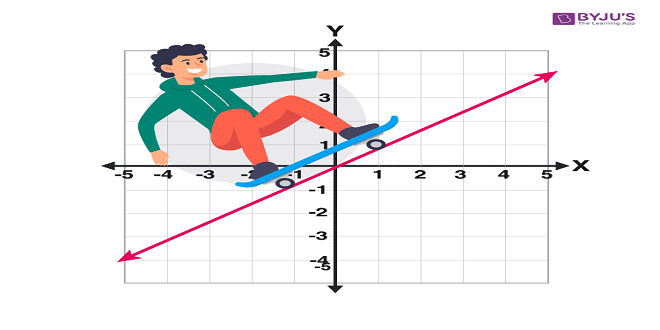Linear Function

In mathematics, a function is an expression, rule, or law that establishes a relationship between one independent variable and another dependent variable. Linear functions are algebraic equations whose terms are constants or the product of constants and single variables. When you draw a graph of a linear function it is a straight line. For example, y = 5x + 7 is a linear function because it depicts a straight line on a coordinate plane.
What is Linear Function?
A linear function is one whose graph is a straight line. This indicates that the function contains one or two variables with no exponents or powers. In order for a function to remain linear, all variables must be constants or known variables.
A function is defined as F(b), where b is an independent variable upon which the function depends. A linear function graph consists of a straight line whose expression or formula is as follows;
y equals f(x) = ax + b
There is one independent variable(x) and one dependent variable(y) in this equation. Examples of Linear Functions
- f(x) = 4x – 5
- f(x) = -7x – 0.45
- f(x) = 5
Identifying Linear Functions
By understanding the following points thoroughly, you will be able to identify linear functions easily.
- The function must have one or two real variables, which is the first requirement. It must be a known variable or constant if another variable is present.
- Because only the C and r are real variables, and the pi is a constant, the function C = 2 * ℼ * r is a linear function.
- The second point is that no variable should have an exponent or a power. They can’t be squared, cubed, or transformed into any other shape. In the numerator, all variables must be.
- The function must also graph to a straight line as the third requirement. A curve of any kind does not qualify as a linear function.
Calculating Linear Functions With Two Ordered Pairs
1. Using the formula m=, calculate the slope using the two ordered pairings(x1,y1) and (x2,y2).
- Substituting the slope and one of the ordered pairs into f(x)=mx+b and solving for b yields the y-intercept.
- In the function f(x)=mx+b, substitute the slope and y-intercept.
Examples
Example 1: Find the slope of the line whose coordinates are (3,6) and (5,2).
Solution: We have,(x1, y1) = (3, 6) and (x2, y2) = (5, 2)
The slope of a line formula is m=
m=
m=
m= -2
Examples 2: Find an equation of the linear function given f(3) = 4 and f(5) = 8.
Solution: Now let us write the two ordered pairs
f(3) = 4 f(5) = 8
(x1, y1) =(3, 4) and (x2, y2) = (5, 8)
Find the slope for (3,4) (5,8)
slope=
=
= =2
∴ Slope = 2
In the equation, substitute the value of slope and y intercept , write an equation like this: y = mx+c
4 = (2) (3) + b
4 = 6 + b
b = 4- 6
b = -2, which is a y-intercept.
y = mx+b
y = (2) (x) – 2
In function Notation: f(x) =2x – 2
Visit Cuemath Website
Math is usually regarded as a topic in which children have little interest. Many kids dislike mathematics because they believe it is difficult. Math, on the other hand, is an important subject. It helps students improve their problem-solving and thinking skills. This is where online math classes come into the picture. Students will benefit much from online math programs as they can learn at their own pace and take as much time as they need to understand a concept. Cuemath online classes are one of a kind. The main purpose of Cuemath is to provide outstanding after-school teaching. Cuemath’s programs deliver high-quality learning outcomes. To help your youngster develop a passion for arithmetic, visit the Cuemath website today.





